If you are a citizen of fire country, you have long resigned yourself to the fact that there’s no stopping wildfire in wild areas; the two rely on each other. But you also know that your home landscape is not wild. You can actively stop a wildfire.
A good landscape in fire country will endure firebrands for days, intense heat for weeks, and do both without igniting. And still, your landscape can do more than that—it can enable and protect the people sent to defend your property and neighborhood. Citizens of fire country know how to Firescape.
California residents can take actions to protect their homes from wildfires,” said Kelly Butler, director of personal property underwriting at Mercury Insurance. “There are steps you can take now to prepare your home, which will help protect your family and property from a wildfire.
Kelly Butler
Director of Personal Property Underwriting at Mercury Insurance
When designing or evaluating a landscape in fire country, it is wise to split the landscape into two categories: the bones and the flesh. The bones of a landscape are its infrastructure and influences how people are able to interact with it. The bones include driveways, pathways and big landscape features. The flesh of a landscape includes all the dynamic and evolving features, such as plants and mulches.
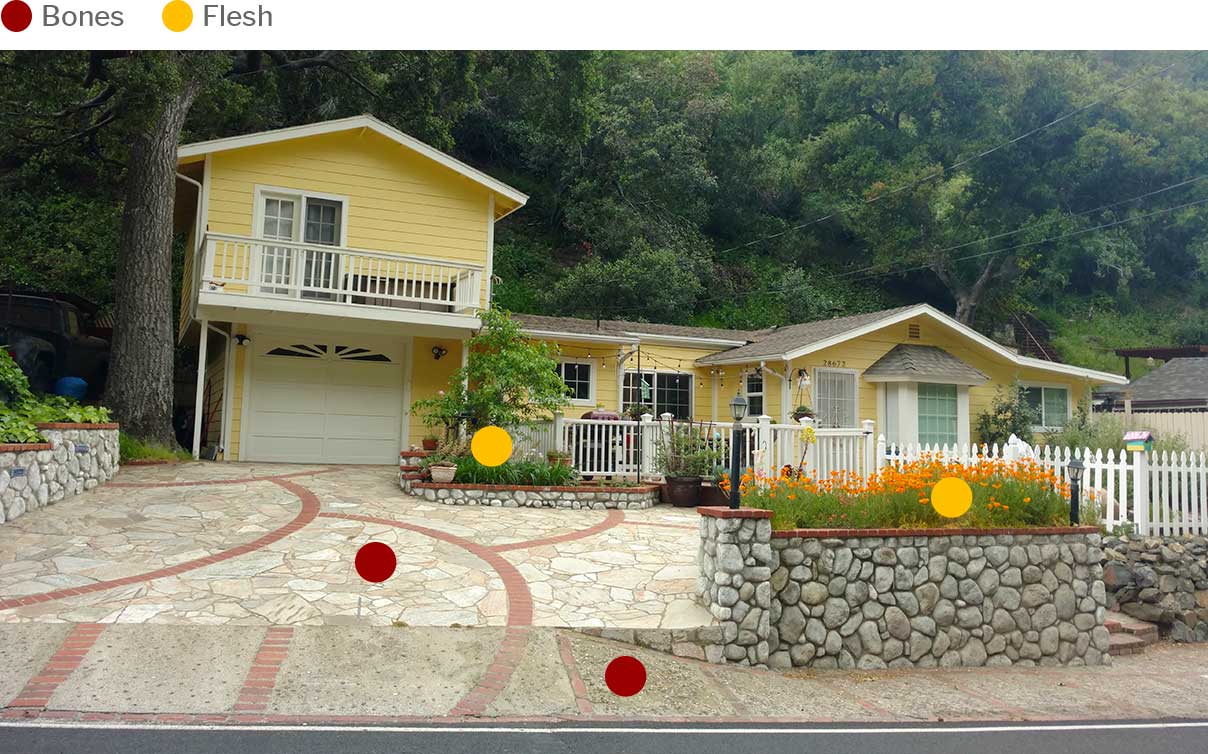
The Bones
Access
Creating access is paramount to survivability during a firestorm. People need to flee and fight, drive and run—creating a comprehensive plan facilitates all these critical endeavors.
Driveways — During a conflagration emergency personnel have to decide - sometimes in a matter of seconds - which homes are the best use of their equipment, time and lives. Your driveway is their first impression.
An ideal driveway will have these characteristics:
- Sightlines: The house should be visible at the start of the driveway. Fire fighters need to know what they are driving in to.
- Address: The address should be posted at the start of the driveway and brightly visible.
- Width: Twelve feet is the recommended width for driveways in fire country, but 8 feet will work with ample clearance on both sides.
- Clearance: Flammable, oversized and dense vegetation is removed 5 feet on either side of the driveway.
- Overhanging Branches: Tree branches are pruned 15 ft above the driveway.
- Reflective Markers: Winding driveways should install reflective guide markers to help drivers in times of poor visibility.
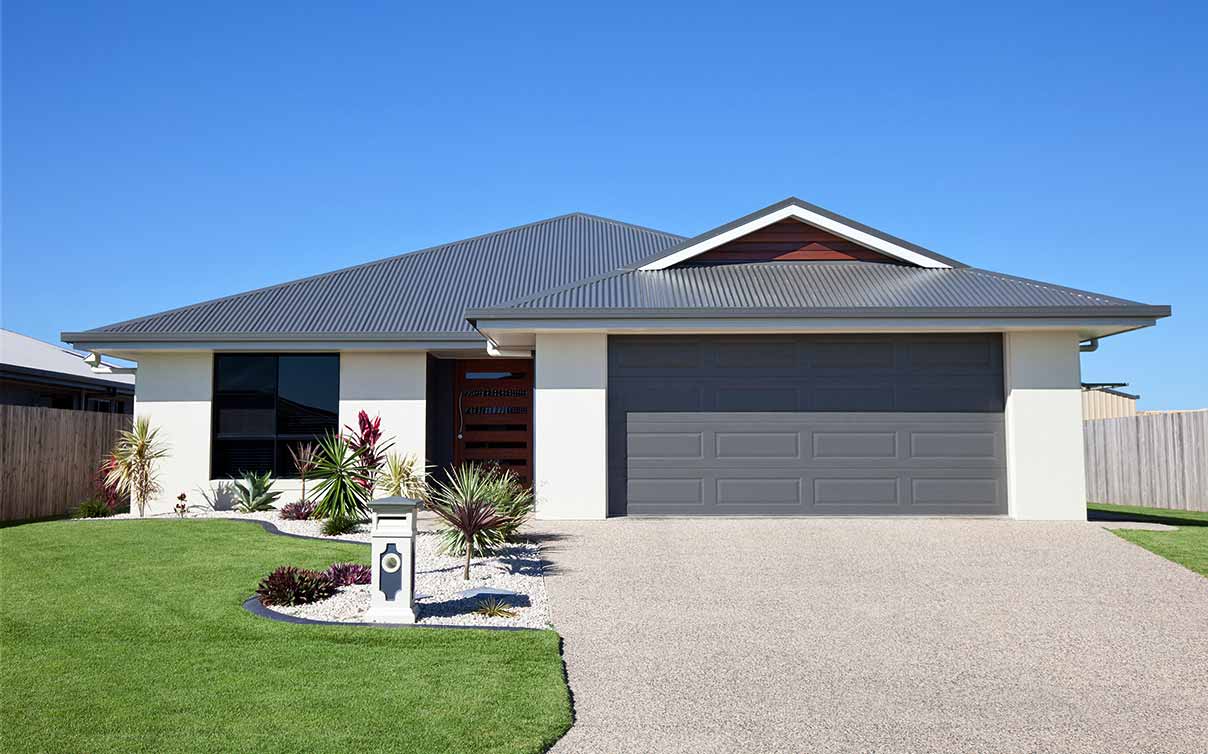
“Saving a home can come down to a matter of minutes. These types of proactive measures on the part of the homeowner are crucial to help firefighting efforts,” said Butler.
Pathways — Garden paths are an essential part of emergency mobilization. They get people and equipment into a landscape. All paths should be easy to see and use, and no one should have to worry about ducking, tripping or being entangled.
An ideal pathway will have these characteristics:
- Width: The path should be at least 4 ft wide and able to accommodate two-way traffic and heavy equipment.
- Surface: The surface will be even, stable, and non-skid (which means no screed concrete).
- Vegetation: Dead and flammable vegetation must be removed to 3 ft on both sides of the path. Overhanging branches are no less than 10 ft off the ground.
- Slope: The slope of a path should never exceed 5%, which is a 1 ft rise over a 20 ft length.
- Cross Slope: The path will have a 2% cross slope to shed water, which should reduce the chances of a puddling water and slippery surfaces. The cross slope should fall upslope and the runoff managed in a swale.
- Visibility: Forward visibility is essential for rapid travel. A minimum of 20 ft of forward visibility should be maintained.
- Handrails: Handrails should accompany steps, which not only benefits the frail, but also people hauling heavy equipment.
- Lighting: Recommended on critical paths, such as those that lead from a road to a structure, lighting makes a huge difference in times of low visibility.
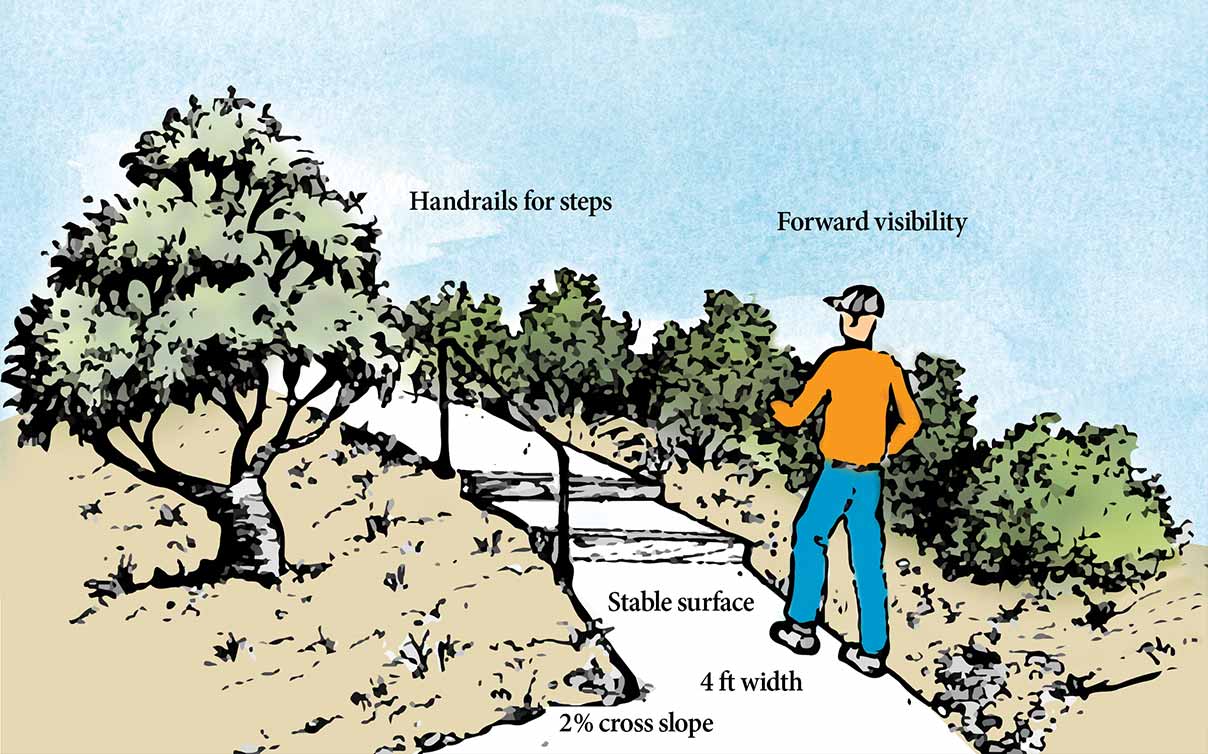
Creating Space for Hasty Work
If you want to help fire fighters protect your home during a firestorm, then give them a place to work and fight. Ideally, there will be workspaces in both the front and back of the house. These areas should be big enough to accommodate multiple people and an assortment of bulky equipment.
An ideal space for hasty work will have these characteristics:
- Size: An effective work area is no less than 20 ft by 20 ft, although much larger is preferred.
- Paths: Stable pathways that are no less than 4 ft wide should link the workspaces in the front and back.
- Surface: The ground surface of your work area can be anything but flammable or highly sloped. Lawn, low growing ground covers and gravel are the best for fire fighting. However, weedy vegetation mowed to no taller than 6 inches is also effective.
- Access: Your work areas must be linked to the other parts of your property, such as the driveway, roadway, and even your neighbor’s property if your lot is small.
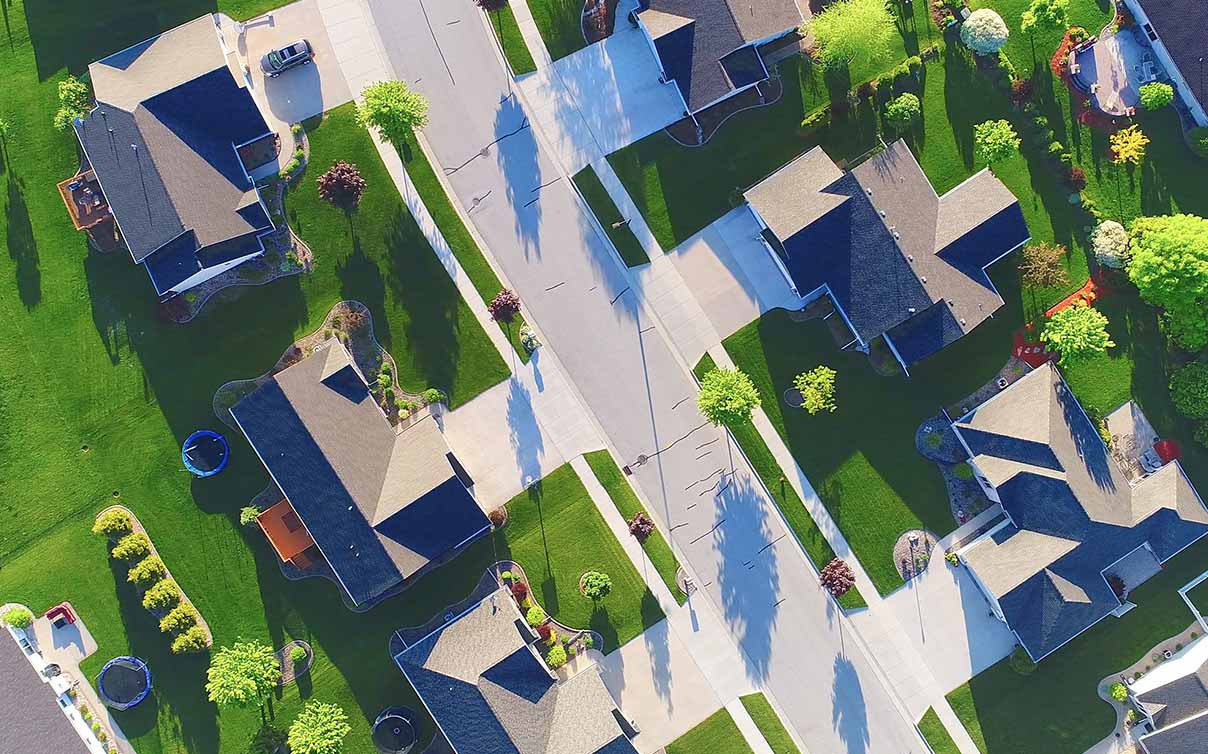
Importantly: if you live on a small property—one without ample pathways and large areas to stage work—then fire fighters are likely to fight a fire from your street. If you want them to park their trucks in front of your house, your street must be lean, green and clean.
Landscape Features
Landscape features increase ignitable material and can hinder emergency response, both of which increases danger and risk. The two most detrimental features are fences and shade structures.
Fences — Fences can become freeways for fires. They are typically constructed with soft wood lumber and lined on both sides with plants that get dense and twiggy—a perfect environment for firebrands and fires. Thankfully, there are many strategies to reduce the risks.
An ideal fence will have these characteristics:
- Non-Flammable: Non-flammable materials, like concrete, iron or stone, are preferred above all else.
- Wood: If made from wood, then only lumber with a 1-hour fire-resistance rating is used.
- Plants: Only fire retardant plants (see below) are planted around any landscape feature.
- Remove: Flammable vegetation removed 10 ft from around fences.
- Care: Fences are well maintained, which might mean washing and staining.
- Replacement: Wood fences have a safe lifespan between 7 and 15 years, depending on environment and care. Replacement must be planned, budgeted and not delayed.
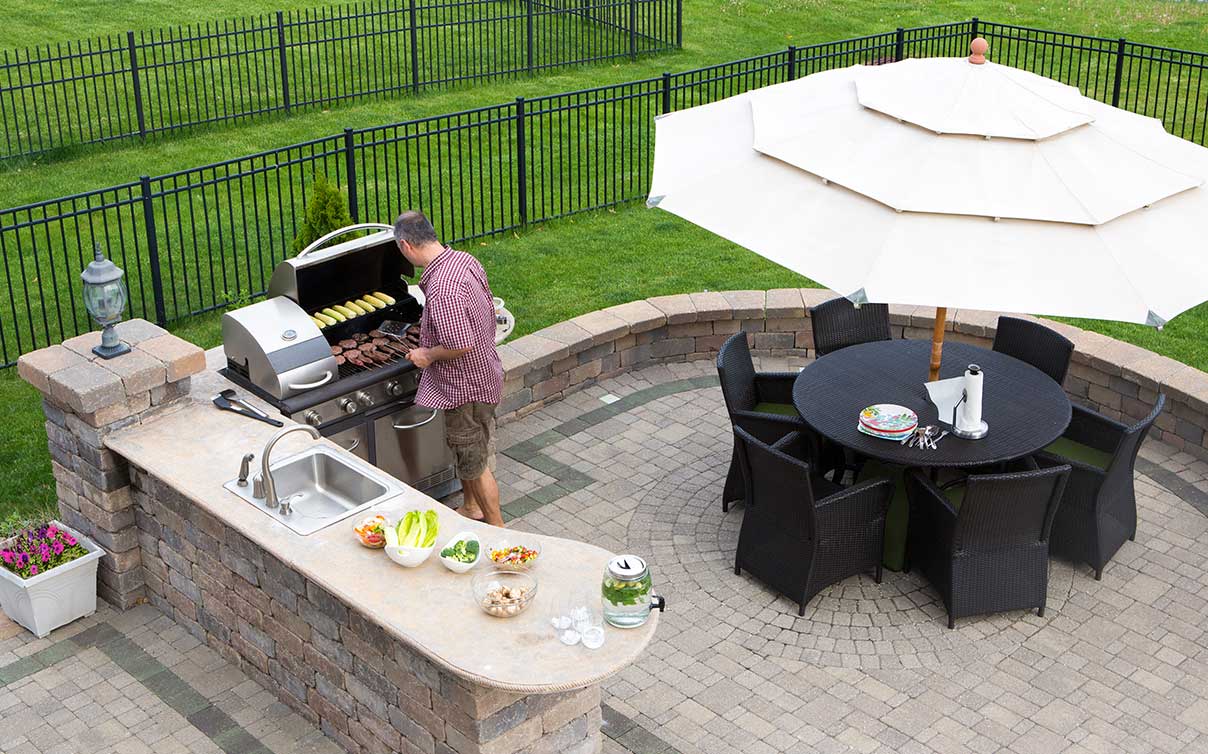
Shade Structures — Arbors, gazebos and pergolas add charm and romance to a landscape, but they also add a lot of risk, too. Shading devices are typically placed up against a structure, made from soft woods, and might have plants growing around and up them. Shade structures are prone to ignition.
An ideal shade structure will have these characteristics:
- Fire-Resistant Wood: All structures must be built with lumber that has at least a 1-hour fire-resistant rating. Although more expensive, steel posts are far better.
- Treated: Maintaining a shade structure with paint or stain—preferably fire/heat resistant—not only extends the life of the wood, but also fills the woods’ fissures, reducing opportunities for firebrands, insects and fungus to take root.
- Encourage Air Circulation: Good airflow must be designed and maintained. Shade structures have a tendency to trap firebrands and heat, making them prone to ignition. Maintaining a 5 ft separation between the house and structure is the most important tactic. Tilting the roof of the structure will also increase airflow.
- Fire Retardant Plants: Only the most fire retardant/resistant plants should be used around structures.
- Plan on Replacement: The lifespan of a wood shade structure varies between 10 and 20 years, depending on the environment and amount of care. The structure will need to be replaced when the wood starts fracturing or splintering; the joints begin to split; or when it shows the signs of extensive termite or rot damage. One of the clearest signs that the structure needs replacement is when it no longer holds paint.
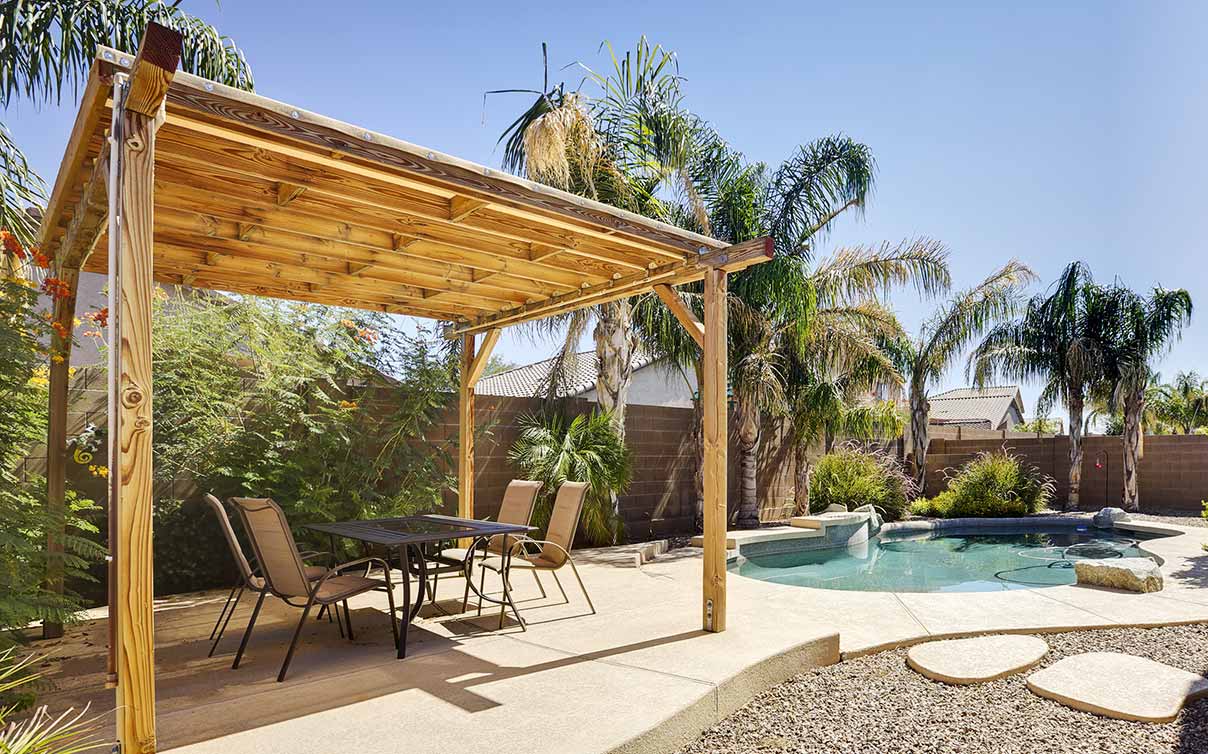
The Flesh
Plants
Plants will either lead a wildfire to your home, or stop it. A Firescaped landscape will endure firebrands for days, intense heat for weeks, and never ignite. Below are two groups of plants that everybody in fire country should know.
Fire Retardant — Tests have shown that when this group of plants is healthy, they will sizzle and wilt when exposed to flames, but are reluctant to produce flames. If properly maintained, these plants can catch and extinguish firebrands. The tradeoff for this protection is irrigation. Most of these plants need supplemental water to maintain adequate plant moisture and health. Below is a small sampling of this group.
|
Common Name |
Botanic Name |
|---|---|
|
Crape Myrtle |
Lagerstroemia spp. |
|
Fescue |
Festuca spp. |
|
Flax |
Phormium tenax |
|
Gazania |
Gazania spp. |
|
Grape |
Vitis spp. |
|
Lily of the Nile |
Agapanthus spp. |
|
Philodendron |
Philodendron spp. |
|
Photinia |
Photinia spp. |
|
Redbud |
Cercis spp. |
|
Succulents |
This includes many different plants |
|
Sweet gum |
Liquidambar spp. |
Fire Resistant — A fire resistant plant repels fire. Their leaves and twiggy growth will produce a flame when exposed to flames and heat, but the flame quickly dies. Thick bark and dense wood protects the plant from fully igniting. Many of these plants survive direct flame contact; some resprouting within a month after a wildfire. Using plants that resist fire and rapidly resprout is vital to reducing risks of erosion following a fire. Although fire resistant plants are drought adapted, most would benefit with an occasional deep watering. Below is a small sampling of this group.
|
Common Name |
Botanic Name |
|---|---|
|
Artemisia ‘Silver King |
Artemisia ‘Silver King |
|
California lilac |
Ceanothus spp. |
|
Coast Live Oak |
Quercus agrifolia |
|
Cotoneaster |
Cotoneaster spp. |
|
Lemonade Berry |
Rhus integrifolia |
|
Island mallow |
Lavatera spp. |
|
Rockrose |
Cistus spp. |
|
Toyon |
Heteromeles arbutifolia |
|
Verbena |
Verbena spp. |
|
Yarrow |
Achillea spp. |
|
Yucca |
Yucca spp. |
The Problems with Plant Lists
If you’ve spent enough time in fire country, you know: plant selection is not the most dominant factor in your landscape’s ability to repel a wildfire. Any plant with dead, dying, diseased or dry parts is far more flammable as a consequence. Landscape maintenance is the most dominant factor to protection.
Gardeners in fire country see their landscape as fire would—we are constantly removing the kindling and that fundamental part of fire building. Our energy replaces that of a wildfire’s, no matter what type of plant is on the landscape.
Mulches
Mulches provide incredible benefits – they slow evaporation, suppress weeds, enrich the soil, reduce topsoil loss, increase rainwater infiltration, regulate soil temperature, and/or make an area look more attractive. But they can cause problems, too.
Many types of mulch make perfect kindling for firebrands and will readily ignite, quickly spreading a wildfire. Below is a brief overview of using mulches in fire country.
Mulches are grouped between inorganic and organic. Inorganic mulches include decomposed granite (dg), gravel and rock. These types of mulches can be used anywhere. There are three broad types of organic mulches: woody, compost and humus.
- Woody Mulches: Bark, gorilla hair and tree shavings are some of the examples of woody mulches. They are mostly carbon, dry and quick to ignite. These are the types of mulches to avoid within the first 30 ft of a structure.
- Compost: Compost is a mixture of carbon and green material that has been allowed to decompose. Compost generally has moisture and small and dark pieces. Compost should not be used within the first 5 ft of a structure.
- Humus: The most decomposed of all the mulches, humus is the only organic mulch that can be used within 5 ft of a structure. It is generally high in moisture and has fine material. It is used as a fertilizer.
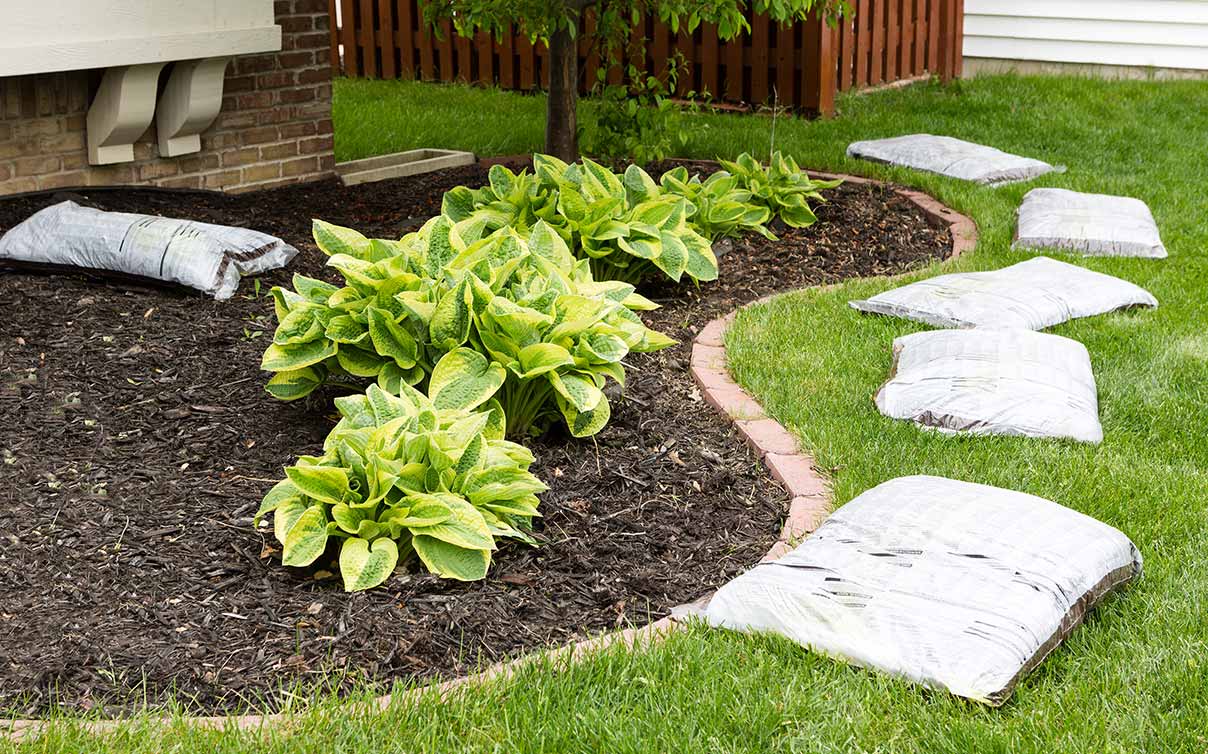
Download the PDF of this Article (Opens in a new window) (PDF file) (1.8mb)


